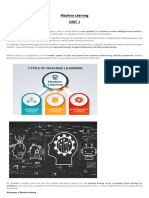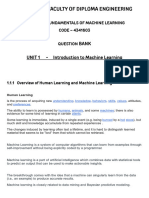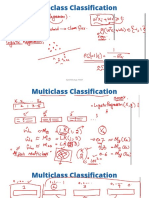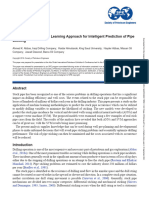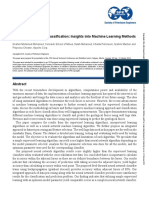0% found this document useful (0 votes)
19 views54 pagesModule 1
The document provides an introduction to machine learning, defining it as a field that enables computers to learn from data without explicit programming. It discusses the increasing need for machine learning due to its ability to handle complex tasks and highlights various applications, advantages, and disadvantages of machine learning techniques. Additionally, it covers different types of machine learning, including supervised and unsupervised learning, along with key concepts such as training and testing datasets, overfitting, and performance measures.
Uploaded by
kush tejaniCopyright
© © All Rights Reserved
We take content rights seriously. If you suspect this is your content, claim it here.
Available Formats
Download as PDF, TXT or read online on Scribd
0% found this document useful (0 votes)
19 views54 pagesModule 1
The document provides an introduction to machine learning, defining it as a field that enables computers to learn from data without explicit programming. It discusses the increasing need for machine learning due to its ability to handle complex tasks and highlights various applications, advantages, and disadvantages of machine learning techniques. Additionally, it covers different types of machine learning, including supervised and unsupervised learning, along with key concepts such as training and testing datasets, overfitting, and performance measures.
Uploaded by
kush tejaniCopyright
© © All Rights Reserved
We take content rights seriously. If you suspect this is your content, claim it here.
Available Formats
Download as PDF, TXT or read online on Scribd
/ 54



